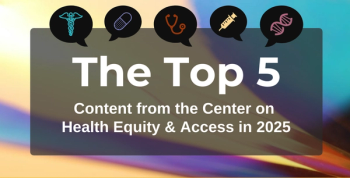
Initiating Treatment in EDs Could Be Critical for Containing Spread of HIV
The researchers of the study argue that emergency departments (EDs) should not just be leveraged to diagnose HIV; they must also be proactive and initiate treatment, as well as facilitate follow-up case management and linkage to care outside of the ED.
As the United States and the world at large continue the fight against the HIV epidemic, a new study is suggesting that emergency departments (EDs) may be the key to containing HIV in traditionally hard-to-reach populations.
However, the researchers of the study argue that EDs should not just be leveraged to diagnose HIV; they must also be proactive and initiate treatment, as well as facilitate follow-up case management and linkage to care outside of the ED.
“We already know that HIV testing in the ED is critical to achieving these targets, but testing alone is just not going to cut it,” said Bhakti Hansoti, MB ChB, PhD, MPH, associate professor of emergency medicine at the Johns Hopkins University School of Medicine and lead author of the study,
Focusing on 3 hospital EDs in South Africa—a region that accounts for 20% of the 38 million people around the world living with HIV—researchers from Johns Hopkins Medicine worked with colleagues in the EDs to test nearly 3000 patients aged 18 to 70 years for HIV between June 2017 and July 2018.
More than 800 (28%) patients tested positive for HIV, 234 (28.9%) of whom were newly diagnosed. Just over half (54%) of those tested also tested positive for the presence of antiretroviral therapy (ART). Of those taking ART, less than half were virally suppressed.
“Patients can be tested for HIV while waiting in the emergency department and then, if positive, be counseled and offered treatment or, at the least, followed up in a specialized HIV care facility,” said Hansoti.
Although more women tested positive for HIV than men (35.3% vs 20.7%), the researchers observed that men were twice as likely to be unaware of their HIV status and thus less likely to be on ART and be virally suppressed. Younger patients were also more likely to be unaware of their status, with the highest prevalence of undiagnosed HIV being concentrated among patients younger than 25 years.
While urging for different initiatives in the ED, the researchers did note that there are several challenges with implementing HIV care services in the setting, including the high volume of patients and provider hesitation to start patients on ART because of possible comorbidities and liabilities.
Reference
Hansoti B, Mwinnyaa G, Hahn E, et al. Testing the HIV epidemic in South Africa: the need for testing and linkage to care in emergency departments [published online August 18, 2019]. EClinicalMedicine. doi: 10.1016/j.eclinm.2019.08.007.
Newsletter
Stay ahead of policy, cost, and value—subscribe to AJMC for expert insights at the intersection of clinical care and health economics.








































